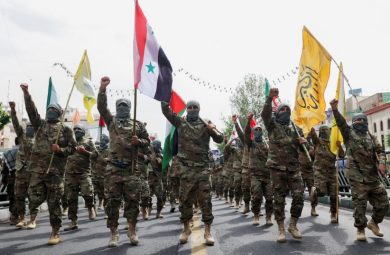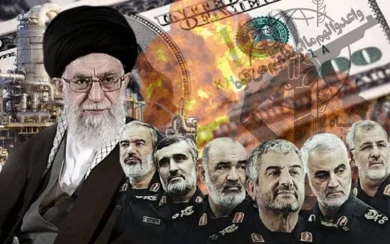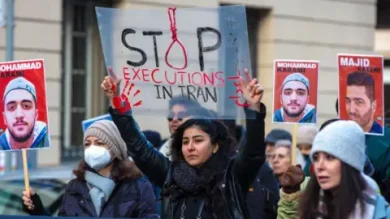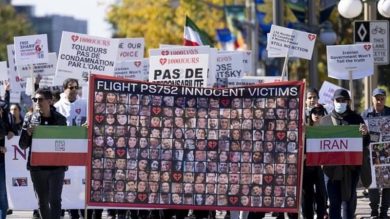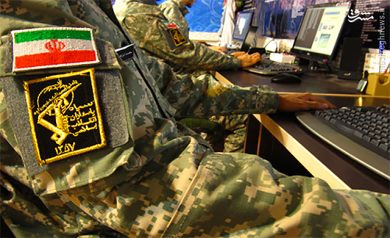The Islamic Revolutionary Guard Corps (IRGC) exerts immense control over Iranian society, targeting not only political dissent but also systematically oppressing ethnic and religious minorities. These groups face discrimination, marginalization, and violence under a regime that views diversity as a threat to its ideological and political dominance. The IRGC’s policies and actions have perpetuated cycles of inequality, disenfranchisement, and persecution for millions of Iranians, making minorities among the most vulnerable under its rule.
This analysis explores how the IRGC targets ethnic and religious minorities, the consequences of its actions, and the resilience of these communities in the face of systemic oppression.
Ethnic Minorities Under the IRGC’s Rule
Iran is home to a diverse array of ethnic groups, including Kurds, Ahwazi Arabs, Baloch, and Azeris, many of whom reside in resource-rich but underdeveloped regions. The IRGC views these communities as potential threats to national unity and exercises harsh control over them.
1. Ahwazi Arabs
Ahwazi Arabs, concentrated in the oil-rich Khuzestan province, face significant economic and cultural marginalization. The IRGC:
• Exploits Resources: Extracts oil from Khuzestan while neglecting the region’s development, leaving locals in poverty.
• Suppresses Activism: Targets activists advocating for economic rights or cultural preservation with imprisonment and torture.
• Forces Displacement: Displaces Ahwazi communities to make way for industrial projects or military bases.
2. Kurds
The Kurdish population in western Iran is another frequent target of IRGC repression. The IRGC:
• Crushes Political Movements: Cracks down on Kurdish parties advocating for autonomy or cultural rights.
• Deploys Violence: Uses military force in Kurdish regions, often labeling activists as separatists.
• Limits Economic Opportunities: Systematically underinvests in Kurdish areas, leading to high unemployment and poverty.
3. Baloch
The Baloch in southeastern Iran face some of the harshest treatment under the IRGC. In Sistan-Baluchestan:
• Militarization: The IRGC has heavily militarized the province, citing security concerns and insurgency threats.
• Targeted Killings: Executes Baloch activists and clerics under the guise of combating extremism.
• Neglect: Deprives the region of infrastructure and public services, leaving it among the least developed in Iran.
Religious Minorities Under the IRGC’s Rule
Iran’s constitution favors Shia Islam, leaving religious minorities vulnerable to persecution. The IRGC enforces policies that target these groups, suppressing their rights and freedoms.
1. Baha’is
The Baha’i community, Iran’s largest non-Muslim religious minority, is frequently targeted by the IRGC:
• Economic Discrimination: Baha’is are barred from public-sector jobs and often denied access to higher education.
• Arbitrary Arrests: Leaders and members of the Baha’i community are regularly arrested on charges of espionage or anti-regime activities.
• Property Seizures: The IRGC confiscates Baha’i-owned lands and businesses, forcing many into poverty.
2. Christians
Christian converts, particularly those from Muslim backgrounds, are targeted for proselytizing and practicing their faith:
• Surveillance and Raids: The IRGC monitors Christian gatherings and arrests attendees under charges of apostasy or national security threats.
• Harassment: Converts and their families often face intimidation and harassment to pressure them into renouncing their faith.
3. Sunni Muslims
Sunni Muslims, particularly in Kurdish and Baloch regions, face discrimination despite being Muslim. The IRGC:
• Restricts Religious Practices: Limits the construction of Sunni mosques and the training of Sunni clerics.
• Labels Activists as Extremists: Equates Sunni advocacy with terrorism, justifying harsh crackdowns.
The Consequences of IRGC Oppression
The IRGC’s policies have profound and lasting impacts on Iran’s minority communities:
1. Economic Marginalization
The IRGC exploits the natural resources of minority regions while depriving them of investment in infrastructure, education, and healthcare, perpetuating poverty and inequality.
2. Cultural Suppression
Ethnic minorities face restrictions on language, traditions, and cultural expression, eroding their identities and fueling resentment.
3. Displacement and Migration
Forced displacement and lack of economic opportunities push minorities to migrate to urban centers or abroad, fragmenting communities and disrupting social cohesion.
4. Cycles of Violence
The IRGC’s militarized approach exacerbates tensions, fueling cycles of resistance and repression that destabilize entire regions.
The Resilience of Minority Communities
Despite decades of repression, Iran’s ethnic and religious minorities continue to resist IRGC policies through activism, cultural preservation, and international advocacy:
• Documenting Abuses: Activists work to document and expose the IRGC’s actions, often at great personal risk.
• Advocacy Abroad: Exiled members of minority communities raise awareness of their struggles on international platforms.
• Grassroots Movements: Local initiatives aim to preserve cultural traditions and provide mutual support within marginalized communities.
The Role of the International Community
The international community has a critical role in addressing the IRGC’s oppression of minorities:
1. Imposing Targeted Sanctions:
Sanctions against IRGC officials and entities involved in human rights abuses can pressure the regime to change its policies.
2. Amplifying Minority Voices:
Platforms for activists and organizations representing minorities can draw global attention to their plight.
3. Demanding Accountability:
Human rights organizations should investigate and report the IRGC’s abuses to hold it accountable on the international stage.
Conclusion
The IRGC’s systemic oppression of ethnic and religious minorities is a profound violation of human rights that undermines Iran’s social fabric and regional stability. These forgotten victims bear the brunt of the IRGC’s exploitative and repressive policies, yet their resilience offers hope for a more inclusive future. Addressing these injustices requires sustained advocacy, international pressure, and a commitment to amplifying the voices of those who have long been silenced.
Join Our Newsletter!
Stay informed with the latest updates, news, and ways to take action in the fight for justice and global security. Sign up now to get updates delivered straight to your inbox!

